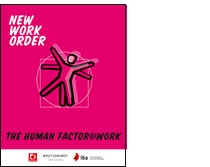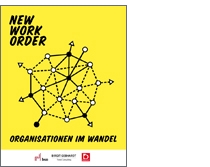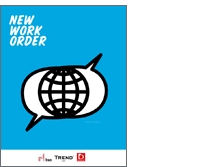
Find out more
Trend research commissioned by IBA
Anyone who, like the members of the IBA, advises other companies on the design of their workplaces must understand the context and be able to incorporate emerging trends into their recommendations at an early stage. This requires a well-founded knowledge base. That’s why, back in 2011, the IBA commissioned the Hamburg trend expert Birgit Gebhardt to prepare a study on New Work. Her brief was to make clear the changes and potential for companies and their employees on the basis of international research results and in discussion with relevant experts. The project, which was originally designed as a single study, evolved into a permanent examination of New Work, the results of which are among other things documented in the New Work Order studies.
The Power of the Space

The New Work Order Special published on the occasion of ORGATEC 2022 is devoted entirely to the various workplaces and their set-up. For this, Birgit Gebhardt bundled the findings of the preceding New Work Order studies and supplemented them with an outlook on special forms of hybrid working in urban environments and in rural areas.
> Download of the study
Human Factor@Work

The trend study, published in 2020, describes the potential of networked thinking. It explains the importance of sensory experiences for people and how interior design can support the associated effects. Under the heading "The I as the navel of the world", the fourth New Work Order study also contains a thoroughly positive view of social media and their influence on learning and cooperation.
> Downoad of the study
The office is being transformed
A central issue dealt with by the first New Work Order study was the question of what role the office plays within the networked world of work. Experts and practitioners agreed on the answer to this question: The office will continue to be needed in the future. It will receive an additional role as a space for personal encounters, and its appearance will change radically. After the Corona pandemic, this anticipation is more relevant than ever.
Creative learning environments

The second in-depth study, which was published in October 2016, describes how worlds of work become learning worlds. It’s obvious that this has to happen, but for many employees 'lifelong learning' sounds more like a threat than a promise. The reasons are obvious: The word 'learning' reminds most people of their schooldays, with a strong pressure to learn and monotonous surroundings. But examples from Scandinavia show that the learning process can be different. In the New Work Order study, these examples are supplemented by insights into the way we learn and the resulting requirements for the surroundings within which we learn and work.
> Download of the study
Organizations are changing

The first in-depth study (which was published in October 2014) describes the new structures, rules and control processes for organizations that are resulting from digitalization. Among German companies, project work is the most popular way of introducing new forms of cooperation. However, as a representative forsa survey commissioned by the IBA has shown, many managers make the mistake of assigning projects to their employees as an additional set of tasks without providing them with the necessary freedom in terms of time, space and organization. Such projects have only limited success, and in most cases the employees are not impressed.
> Download of the study

New Work Order
This term is a deliberate play on the concept of a new world order, because the ongoing structural transformation of industry into a networked economy calls on entrepreneurs to restructure their organizations from top to bottom.
Birgit Gebhardt, trend researcher
New Work Order basic study

Social media change the relationship between companies and customers. Customers expect not only to be addressed individually but also to receive quick reactions to their questions. Traditional organizations with decision-making across several hierarchy levels are too slow for that. Instead, there’s a demand for all the responsible parties in a company to be directly connected. It therefore makes sense to take the technical possibilities offered by social media and transfer them to internal communication. When the first New Work Order study was published in October 2012, 36% of all German companies were already experimenting with these pioneering elements of a new work culture.
> Download of the study

